Many native grasses are now available for sale in local nurseries. If you have not tried any in your landscape, little bluestem (
Schizachyrium scoparium) is an excellent choice. This charming grass does not lack admirable attributes; beyond the fantastic foliage color and compact, upright form, it also provides food and shelter for wildlife. The foliage of little bluestem is consumed by the caterpillars of many skipper butterflies, and birds feed on the seeds throughout the winter. Take pleasure in the fact that when you plant little bluestem, you are providing a valuable plant for wildlife and at the same time getting a graceful native grass that is easy to care for.
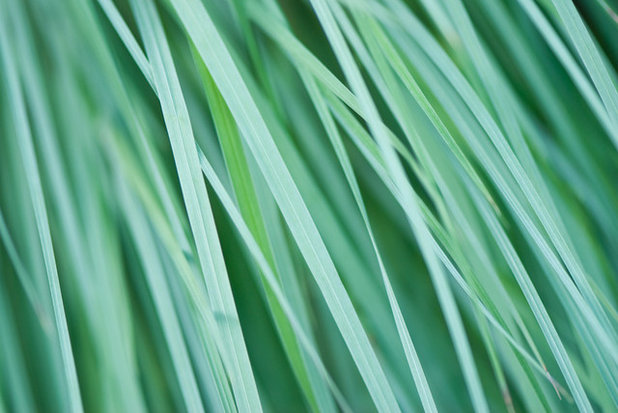
Holm Design & Consulting LLC
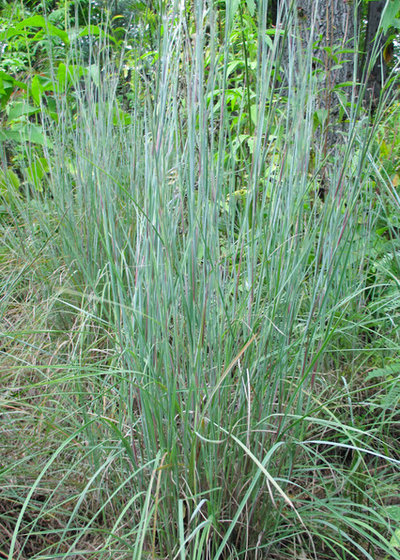
Holm Design & Consulting LLC
Botanical name: Schizachyrium scopariumCommon name: Little bluestem
Origin: Native to all of North America except Alaska, Oregon, Nevada, Prince Edward Island, Newfoundland and the Canadian territories
Where it will grow: Hardy to -50 degrees Fahrenheit (USDA zones 2a to 9b; find your zone)
Typical plant communities: Prairies, meadows and savannas
Soil requirement: Dry to mesic, sand to clay-loam soil
Light requirement: Full to partial sun
Mature size: 2 to 3 feet tall and 1½ to 2 feet wide
Benefits and tolerances: Very drought tolerant
Seasonal interest: Flowers from August to October; silvery, blue-gray grass blades turn copper in September
When to plant: Spring or fall
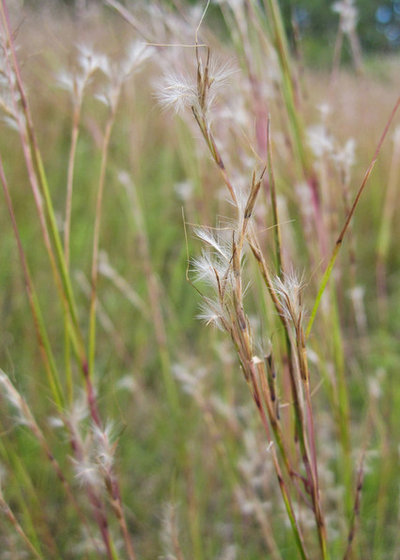
Holm Design & Consulting LLC
Distinguishing traits. Little bluestem has many distinguishing traits. The silvery, blue-gray foliage and alternating blue and light pink nodes on the flower stalks are unique features of this native grass. It really begins to shine from late summer until snowfall, when the foliage turns a rusty red to copper.
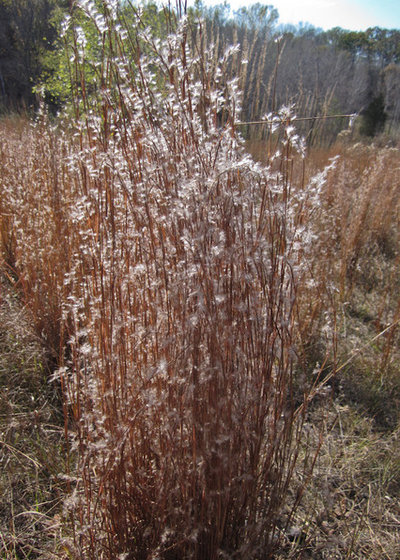
Holm Design & Consulting LLC
How to use it. Little bluestem is known for its deep, fibrous roots. Because of the extensive root system (once the plant is established), it thrives in dry, sandy soils.
This native grass is one of the shorter prairie grasses, reaching heights of approximately 3 feet. Its upright, linear form and graceful foliage make it suitable for any formal or informal naturalized planting. For the best effect, mass many plants together to highlight the foliage color and form. Little bluestem rarely flops, and can therefore be sited next to delicate flowering perennials.
Shown: Fluffy white seed heads in late fall
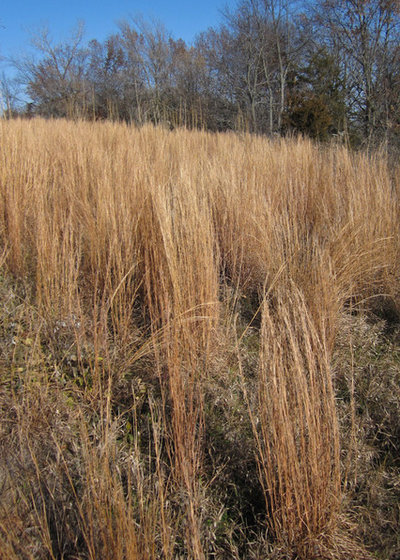
Holm Design & Consulting LLC
Planting notes. Little bluestem is very tolerant of dry soils but will also thrive in richer loam soils. This grass requires a location with full sun. Partial shade (afternoon sun) is tolerated, but flowering may be diminished.
Little bluestem is a warm-season grass and does not green up right away in the spring. It is recommended that you leave the foliage standing during the winter (for interest and to provide seeds for birds), then wait until new growth starts in the spring before cutting it down. An alternative strategy is to interplant this grass with an early-flowering native plant, such as pasqueflower (
Anemone patens), which will provide interest until new growth begins on the grass.
Shown: The coppery fall color that’s typical in late October and November
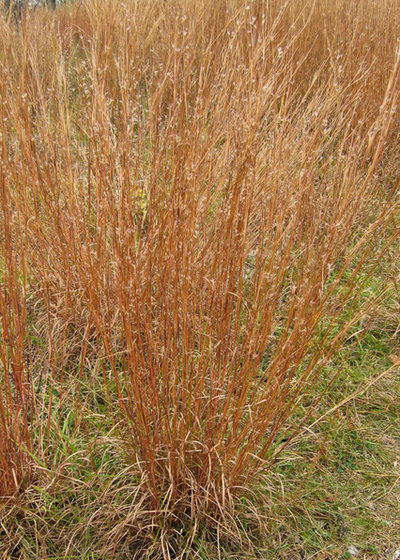
Holm Design & Consulting LLC
Little bluestem grows very well from seed, and this is an economical way to go if you are planning an informal prairie or other large naturalized planting. It is commonly grown in large tracts by native plant growers, where the seed is combined, processed and bagged. Plants in pots ranging from 2 inches to 1 gallon are commonly sold at native plant nurseries.
The seeds are sought by juncos and sparrows in late fall and winter. I get a lot of pleasure from seeing bird tracks on the snow and the remnants of seed heads that have been pecked by the birds. I take comfort in knowing that I am providing an important source of food for these birds, helping them survive the long, cold Minnesota winter.
More: 8 Perennials for Great Fall Color
Browse plants native to more regions of the U.S.





